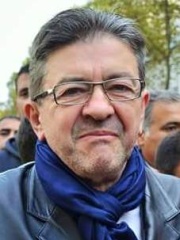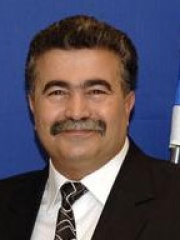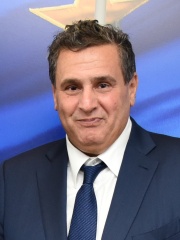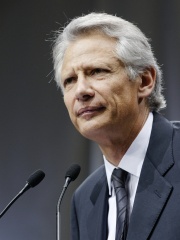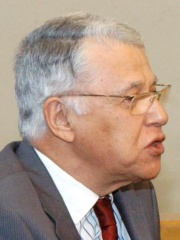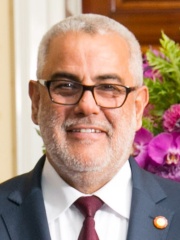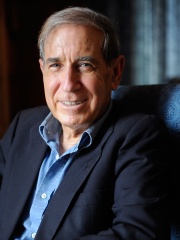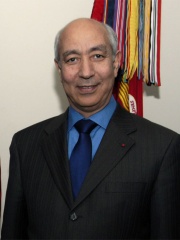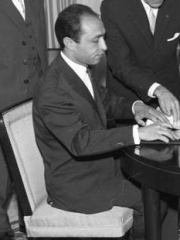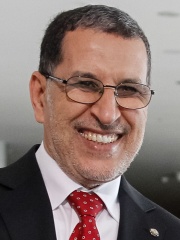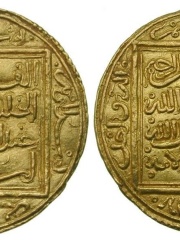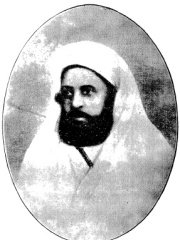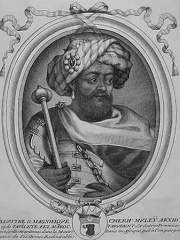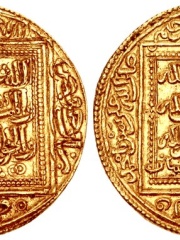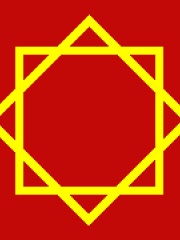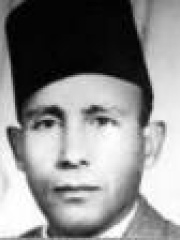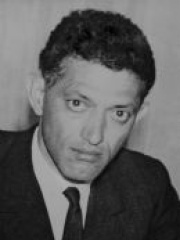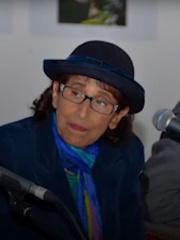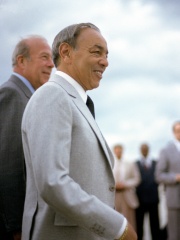
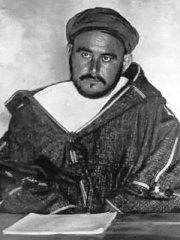
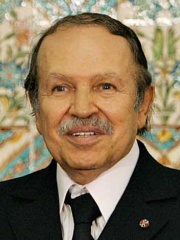
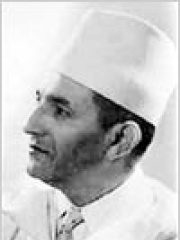
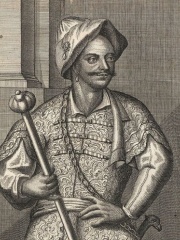
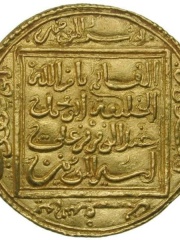
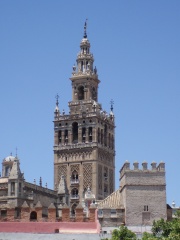
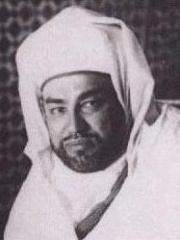
The Most Famous
POLITICIANS from Morocco
This page contains a list of the greatest Moroccan Politicians. The pantheon dataset contains 19,576 Politicians, 56 of which were born in Morocco. This makes Morocco the birth place of the 54th most number of Politicians behind South Africa, and Belarus.
Top 10
The following people are considered by Pantheon to be the top 10 most legendary Moroccan Politicians of all time. This list of famous Moroccan Politicians is sorted by HPI (Historical Popularity Index), a metric that aggregates information on a biography’s online popularity. Visit the rankings page to view the entire list of Moroccan Politicians.

1. Hassan II of Morocco (1929 - 1999)
With an HPI of 72.61, Hassan II of Morocco is the most famous Moroccan Politician. His biography has been translated into 61 different languages on wikipedia.
Hassan II (Arabic: الحسن الثاني, romanized: al-Ḥasan aṯ-ṯhānī; 9 July 1929 – 23 July 1999) was King of Morocco from 1961 until his death in 1999. He was a member of the 'Alawi dynasty, the eldest son of Sultan Mohammed V, and his second wife, Lalla Abla bint Tahar. He was the first commander-in-chief of the Royal Armed Forces and named crown prince in 1957. He was enthroned as king in 1961 following his father's death. Hassan's reign was marked by the start of the Western Sahara conflict and the Sand War. He was the target of two failed coups d'état in 1971 and in 1972. Hassan's conservative approach reportedly strengthened his rule over Morocco and the Western Sahara. He was accused of authoritarian practices and human rights, civil rights abuses, particularly during the Years of Lead. A truth commission was set-up after his death, to investigate allegations of human rights violations during his reign.

2. Abd el-Krim (1882 - 1963)
With an HPI of 69.83, Abd el-Krim is the 2nd most famous Moroccan Politician. His biography has been translated into 58 different languages.
Muhammad ibn Abd al-Karim al-Khattabi (Arabic: محمد بن عبد الكريم الخطابي), better known as Abd el-Krim (Arabic: عبد الكريم; 1882 or 1883 – 6 February 1963), was a Moroccan political and military leader and the president of the Republic of the Rif. He and his brother M'Hammad led a large-scale revolt by a coalition of Riffian tribes against the Spanish and French Protectorates of the Rif and the rest of Morocco. His guerrilla tactics, which included the first-ever use of tunneling as a technique of modern warfare, directly influenced Ho Chi Minh, Mao Zedong and Che Guevara. He also became one of the major figures of Arab nationalism, which he actively supported.

3. Abdelaziz Bouteflika (1937 - 2021)
With an HPI of 69.62, Abdelaziz Bouteflika is the 3rd most famous Moroccan Politician. His biography has been translated into 88 different languages.
Abdelaziz Bouteflika (; Arabic: عبد العزيز بوتفليقة, romanized: ʿAbd al-ʿAzīz Būtaflīqa [ʕabd elʕaziːz buːtefliːqa]; 2 March 1937 – 17 September 2021) was an Algerian politician and diplomat who served as the seventh president of Algeria from 1999 to his resignation in 2019. Before his stint as an Algerian politician, Bouteflika served during the Algerian War as a member of the National Liberation Front. After Algeria gained its independence from France, he served as the Minister of Foreign Affairs between 1963 until 1979. He served as President of the United Nations General Assembly during the 1974–1975 session. In 1983 he was convicted of stealing millions of dinars from Algerian embassies during his diplomatic career. In 1999, Bouteflika was elected president of Algeria in a landslide victory. He would win re-elections in 2004, 2009, and 2014. As President, he presided over the end of the Algerian Civil War in 2002 when he took over the project of his immediate predecessor President Liamine Zéroual, and he ended emergency rule in February 2011 amidst regional unrest. Following a stroke in 2013, Bouteflika had made few public appearances throughout his fourth term, making his final appearance in 2017.Bouteflika resigned on 2 April 2019 amid months of mass protests opposing his candidacy for a fifth term. With nearly 20 years in power, he is the longest-serving head of state of Algeria to date. Following his resignation, Bouteflika became a recluse and died at the age of 84 in 2021, over two years after his resignation. After his death it became known in a Suisse secrets data leak, that he held a Credit Suisse account which overlapped with much of his presidency.

4. Mohammed V of Morocco (1909 - 1961)
With an HPI of 68.62, Mohammed V of Morocco is the 4th most famous Moroccan Politician. His biography has been translated into 44 different languages.
Mohammed al-Khamis bin Yusef bin Hassan al-Alawi (Arabic: محمد الخامس بن يوسف بن الحسن بن محمد بن عبد الرحمن بن هشام بن محمد بن عبد الله بن إسماعيل بن الشريف بن علي العلوي), better known simply Mohammed V (Arabic: محمد الخامس) (10 August 1909 – 26 February 1961), was the last Sultan of Morocco from 1927 to 1953 and from 1955 to 1957, and first King of Morocco from 1957 to 1961. A member of the 'Alawi dynasty, he played an instrumental role in securing the independence of Morocco from France and Spain. Mohammed was enthroned as sultan upon the death of his father Yusef bin Hassan in 1927. Early in his reign, his approval of the Berber Dahir drew widespread backlash and spurred an upsurge of Moroccan nationalism and opposition to continued French rule. Initially more amenable to colonial authorities, Mohammed grew increasingly supportive of the nationalist movement later on. During World War II he supported the Allies, participated in the 1943 Anfa Conference and took steps to protect Moroccan Jews from Vichy persecution. Mohammed became a central figure of the independence cause after the war. In 1947, he delivered a historic speech in Tangier, in which he made an open appeal for Moroccan independence and emphasized the country's ties with the rest of the Arab world. His relationship with the French became increasingly strained afterwards as colonial rule grew more repressive. In 1953, French authorities deposed Mohammed, exiled him to Corsica (later transferring him to Madagascar) and installed his first cousin once removed Mohammed Ben Aarafa as sultan. The deposition sparked active opposition to the French protectorate and two years later, faced with rising violence in Morocco, the French government allowed Mohammed's return. In 1956, he successfully negotiated with France and Spain for Moroccan independence, and in the following year he assumed the title of king. Mohammed died in 1961 at the age of 51 and was succeeded by his eldest son, who took the throne as Hassan II.
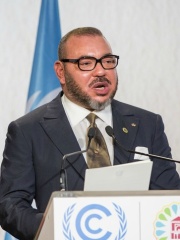
5. Mohammed VI of Morocco (b. 1963)
With an HPI of 67.85, Mohammed VI of Morocco is the 5th most famous Moroccan Politician. His biography has been translated into 90 different languages.
Mohammed VI (Arabic: محمد السادس, romanized: Muḥammad as-sādis; born 21 August 1963) is King of Morocco. A member of the 'Alawi dynasty, he acceded to the throne on 23 July 1999, upon the death of his father, King Hassan II.Mohammed has vast business holdings across several economic sectors in Morocco. His net worth has been estimated at between US$2.1 billion and over US$8.2 billion. In 2015, Forbes named him the richest king in Africa and the fifth wealthiest monarch in the world.Upon ascending to the throne, Mohammed initially introduced a number of reforms and changed the family code, Mudawana, granting women more power. Leaked diplomatic cables from WikiLeaks in 2010 led to allegations of corruption in the court of Mohammed, implicating him and his closest advisors. In 2011, protests considered part of the wider Arab Spring occurred against alleged government corruption. In response, Mohammed enacted several reforms and introduced a new constitution. These reforms were passed by a public referendum on 1 July 2011.

6. Ismail Ibn Sharif (1646 - 1727)
With an HPI of 67.33, Ismail Ibn Sharif is the 6th most famous Moroccan Politician. His biography has been translated into 36 different languages.
Moulay Ismail Ibn Sharif (Arabic: مولاي إسماعيل بن الشريف), born around 1645 in Sijilmassa and died on 22 March 1727 at Meknes, was a Sultan of Morocco from 1672 to 1727, as the second ruler of the 'Alawi dynasty. He was the seventh son of Moulay Sharif and was governor of the province of Fez and the north of Morocco from 1667 until the death of his half-brother, Sultan Moulay Rashid in 1672. He was proclaimed sultan at Fez, but spent several years in conflict with his nephew Moulay Ahmed ben Mehrez, who also claimed the throne, until the latter's death in 1687. Moulay Ismail's 55-year reign is the longest of any sultan of Morocco. During his lifetime, Isma’il amassed a harem of over 500 women with more than 800 confirmed biological children, making him one of the most prodigious fathers in recorded history. The reign of Moulay Ismail marked a high watermark for Moroccan power. His military successes are explained by the creation of a strong army, originally relying on the 'Guichs' (especially the Udaya) and on the Black Guard (or Abid al-Bukhari), black slaves who were totally devoted to him. As a result, the central power could be less reliant on tribes that often rebelled. Moulay Ismail failed against the Regency of Algiers during the Battle of Moulouya in 1692, as he tried to expand his territory towards Tlemcen. Moulay Ismail once again attempted to capture Oran, which was under Spanish rule, he had some success in pushing back the tribes of the Regency of Algiers until the Algerian Bey Mustapha cooperated with the Spaniards in pushing back Moulay Ismail's army. Moulay Ismail engaged in the Maghrebi War against the Regency of Algiers, he was successful in conquering the Western Beylik, he even looted the palace of the Bey. His army was subsequently pushed back in the Battle of Chelif in 1701. He participated in other minor battles such as Laghouat in 1708 which ended successfully. He expelled the Europeans from the ports they had occupied: Larache, Asilah, Mehdya, and Tangier. He took thousands of Christians prisoner and nearly took Ceuta. Ismail controlled a fleet of corsairs based at Salé-le-Vieux and Salé-le-Neuf (now Rabat), which supplied him with European Christian slaves and weapons through their raids in the Mediterranean and all the way to the Black Sea. He established significant diplomatic relations with foreign powers, especially the Kingdom of France, Great Britain, and Spain. Often compared to his contemporary, Louis XIV, due to his charisma and authority, Moulay Ismail was nicknamed the 'bloody king' by the Europeans due to his extreme cruelty and exaction of summary justice upon his Christian slaves. He is also known in his native country as the "Warrior King". He also made Meknes his capital and undertook the construction of an enormous citadel and palace complex next to its old city which included several grand residences, gardens, monumental gates, mosques, and more than forty kilometers of walls. He died following a sickness. After his death, his supporters became so powerful that they controlled the country, enthroning and dethroning the sultans at will.

7. Ibn Tumart (1097 - 1130)
With an HPI of 62.86, Ibn Tumart is the 7th most famous Moroccan Politician. His biography has been translated into 32 different languages.
Abu Abd Allah Amghar Ibn Tumart (Berber: Amghar ibn Tumert, Arabic: أبو عبد الله امغار ابن تومرت, ca. 1080–1130 or 1128) was a Muslim Berber religious scholar, teacher and political leader, from the Sous in southern present-day Morocco. He founded and served as the spiritual and first military leader of the Almohad movement, a puritanical reform movement launched among the Masmuda Berbers of the Atlas Mountains. Ibn Tumart launched an open revolt against the ruling Almoravids during the 1120s. After his death his followers, the Almohads, went on to conquer much of North Africa and part of Spain. Although the Almohad movement itself was founded by Ibn Tumart, his disciple Abd al-Mu'min was the founder of the ruling dynasty and creator of the Almohad empire.

8. Abu Yusuf Yaqub al-Mansur (1160 - 1199)
With an HPI of 62.25, Abu Yusuf Yaqub al-Mansur is the 8th most famous Moroccan Politician. His biography has been translated into 31 different languages.
Abū Yūsuf Yaʿqūb ibn Yūsuf ibn Abd al-Muʾmin al-Manṣūr (Arabic: أبو يوسف يعقوب بن يوسف بن عبد المؤمن المنصور; d. 23 January 1199), commonly known as Yaqub al-Mansur (يعقوب المنصور) or Moulay Yacoub (مولاي يعقوب), was the third Almohad Caliph. Succeeding his father, al-Mansur reigned from 1184 to 1199. His reign was distinguished by the flourishing of trade, architecture, philosophy and the sciences, as well as by victorious military campaigns in which he was successful in repelling the tide of the Reconquista in the Iberian Peninsula.

9. Yusef of Morocco (1882 - 1927)
With an HPI of 61.88, Yusef of Morocco is the 9th most famous Moroccan Politician. Her biography has been translated into 25 different languages.
Moulay Yusef ben Hassan (Arabic: مولاي يوسف بن الحسن), born in Meknes on 1882 and died in Fes in 1927, was the 'Alawi sultan of Morocco from 1912 to 1927. He was the son of Hassan I of Morocco, who was the son of Muhammad IV of Morocco.
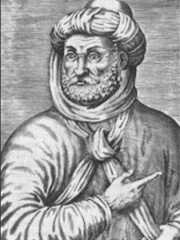
10. Ahmad al-Mansur (1549 - 1603)
With an HPI of 61.60, Ahmad al-Mansur is the 10th most famous Moroccan Politician. His biography has been translated into 28 different languages.
Ahmad al-Mansur (Arabic: أبو العباس أحمد المنصور, Ahmad Abu al-Abbas al-Mansur, also al-Mansur al-Dahabbi (the Golden), Arabic: أحمد المنصور الذهبي; and Ahmed al-Mansour; 1549 in Fes – 25 August 1603, Fes) was the Saadi Sultan of Morocco from 1578 to his death in 1603, the sixth and most famous of all rulers of the Saadis. Ahmad al-Mansur was an important figure in both Europe and Africa in the sixteenth century. His powerful army and strategic location made him an important power player in the late Renaissance period. He has been described as "a man of profound Islamic learning, a lover of books, calligraphy and mathematics, as well as a connoisseur of mystical texts and a lover of scholarly discussions."
People
Pantheon has 63 people classified as Moroccan politicians born between 791 and 1996. Of these 63, 20 (31.75%) of them are still alive today. The most famous living Moroccan politicians include Mohammed VI of Morocco, Jean-Luc Mélenchon, and Amir Peretz. The most famous deceased Moroccan politicians include Hassan II of Morocco, Abd el-Krim, and Abdelaziz Bouteflika. As of April 2024, 8 new Moroccan politicians have been added to Pantheon including Abu Zakariya Yahya, Ahmed Osman, and Abu Sa'id Uthman II.
Living Moroccan Politicians
Go to all RankingsMohammed VI of Morocco
1963 - Present
HPI: 67.85
Jean-Luc Mélenchon
1951 - Present
HPI: 60.49
Amir Peretz
1952 - Present
HPI: 58.63
Aziz Akhannouch
1961 - Present
HPI: 58.42
Dominique de Villepin
1953 - Present
HPI: 58.26
Abbas El Fassi
1940 - Present
HPI: 56.33
Abdelilah Benkirane
1954 - Present
HPI: 56.17
Shlomo Ben-Ami
1943 - Present
HPI: 54.45
Driss Jettou
1945 - Present
HPI: 54.40
Ahmed Aboutaleb
1961 - Present
HPI: 52.88
Ahmed Osman
1930 - Present
HPI: 52.76
Saadeddine Othmani
1956 - Present
HPI: 51.37
Deceased Moroccan Politicians
Go to all RankingsHassan II of Morocco
1929 - 1999
HPI: 72.61
Abd el-Krim
1882 - 1963
HPI: 69.83
Abdelaziz Bouteflika
1937 - 2021
HPI: 69.62
Mohammed V of Morocco
1909 - 1961
HPI: 68.62
Ismail Ibn Sharif
1646 - 1727
HPI: 67.33
Ibn Tumart
1097 - 1130
HPI: 62.86
Abu Yusuf Yaqub al-Mansur
1160 - 1199
HPI: 62.25
Yusef of Morocco
1882 - 1927
HPI: 61.88
Ahmad al-Mansur
1549 - 1603
HPI: 61.60
Abu Yaqub Yusuf
1138 - 1184
HPI: 61.56
Hassan I of Morocco
1836 - 1894
HPI: 60.54
Al-Rashid of Morocco
1631 - 1672
HPI: 60.03
Newly Added Moroccan Politicians (2024)
Go to all RankingsAbu Zakariya Yahya
1203 - 1249
HPI: 54.28
Ahmed Osman
1930 - Present
HPI: 52.76
Abu Sa'id Uthman II
1275 - 1331
HPI: 50.40
Ahmed Bahnini
1909 - 1971
HPI: 49.41
Abdallah Ibrahim
1918 - 2005
HPI: 49.33
Maati Bouabid
1927 - 1996
HPI: 47.99
Mohamed Benhima
1924 - 1992
HPI: 47.33
Touriya Jabrane
1952 - 2020
HPI: 43.07
Overlapping Lives
Which Politicians were alive at the same time? This visualization shows the lifespans of the 25 most globally memorable Politicians since 1700.

